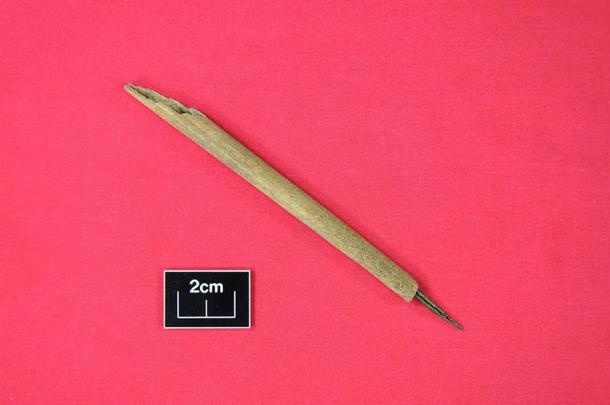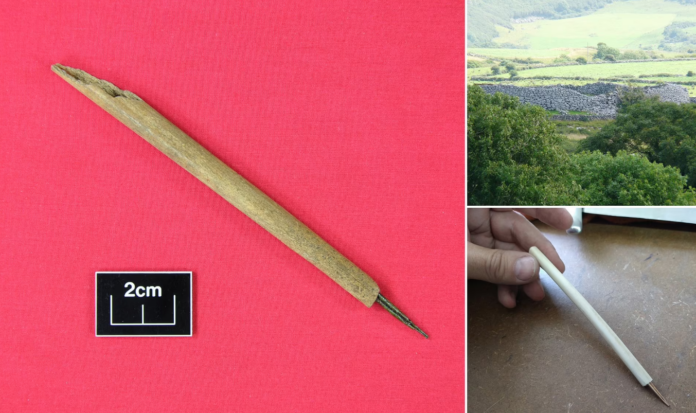An extraordinary archaeological find has emerged from the heart of Ireland, offering a rare glimpse into the past. During an excavation at an 11th-century ringfort, archaeologists uncovered what is believed to be Ireland’s oldest ink pen. This discovery not only enriches our understanding of medieval craftsmanship but also highlights a surprising aspect of secular life during the era.
A Historic Discovery
The ink pen, dating back 1,000 years, was unearthed by Dr. Michelle Comber from the National University of Ireland (NUI) Galway. It was found within an archaeological layer of the Caherconnell Cashel ringfort, located in County Clare. Unlike many medieval artifacts typically associated with religious settings, this pen was used for secular purposes, specifically for drafting legal documents rather than creating religious manuscripts or artworks.

The pen is crafted from a hollowed bone barrel with a copper-alloy nib. This combination of materials and design signifies its unique function as a writing instrument in a period where religious artifacts often dominated archaeological finds. Dr. Comber noted the pen’s significance lies in its secular usage, contrasting with the more commonly discovered religious manuscripts from that era.
The Significance of the Caherconnell Cashel Ringfort
The Caherconnell Cashel ringfort, constructed in the late 10th century and enhanced until the early 17th century, was a formidable structure with 13-feet high, 10-foot-thick drystone walls. As a residence for wealthy agriculturalist-rulers, it is not surprising that sophisticated tools like the ink pen were found there. The ringfort was known for its extensive collection of fine craftworking tools, metalwork items, and objects related to trade, gaming, and music.

The pen’s discovery among these artifacts emphasizes its importance, standing out due to its distinct use and the setting in which it was found. Unlike the typical religious artifacts discovered at similar sites, this pen offers a glimpse into the everyday secular life of the time.
A Unique Artifact
The Caherconnell ink pen is particularly notable because it represents the earliest complete example of a composite pen discovered in the British Isles. Dr. Comber collaborated with experimental archaeologist Adam Parsons to replicate the pen and confirm its functionality as a dip pen. Unlike fountain pens or feather quills, this dip pen had no ink reservoir, relying on its design to draw ink from an external source.

The bone-and-metal pen’s unique design, with its hollow barrel and copper nib, demonstrates its suitability for precise writing tasks. Calligrapher and historian Tim O’Neill noted that the pen’s design would have been ideal for creating fine lines and ruling straight edges, further illustrating its practical use for drafting and record-keeping.
The Evolution of Writing Tools

The discovery of this ancient ink pen sheds light on the evolution of writing tools. Historically, writing tools have ranged from hollow reeds filled with ink used in ancient Egypt around 2600 BC to feather quills used in medieval Europe. The transition from natural reeds to feather quills highlights the ongoing advancements in writing technology.
In medieval Britain, feathers from swans, turkeys, and geese were preferred for their writing quality. Writers would carefully sharpen and prepare these feathers to ensure the best performance, reflecting the importance placed on writing precision.
Conclusion
The unearthing of Ireland’s oldest ink pen offers a fascinating look into medieval secular life and the technological advancements of the time. As one of the earliest examples of a composite pen, this artifact not only enriches our understanding of historical writing tools but also provides valuable insight into the daily lives and administrative practices of Ireland’s past. Through this discovery, we gain a deeper appreciation for the tools that have shaped human communication and record-keeping throughout history.
